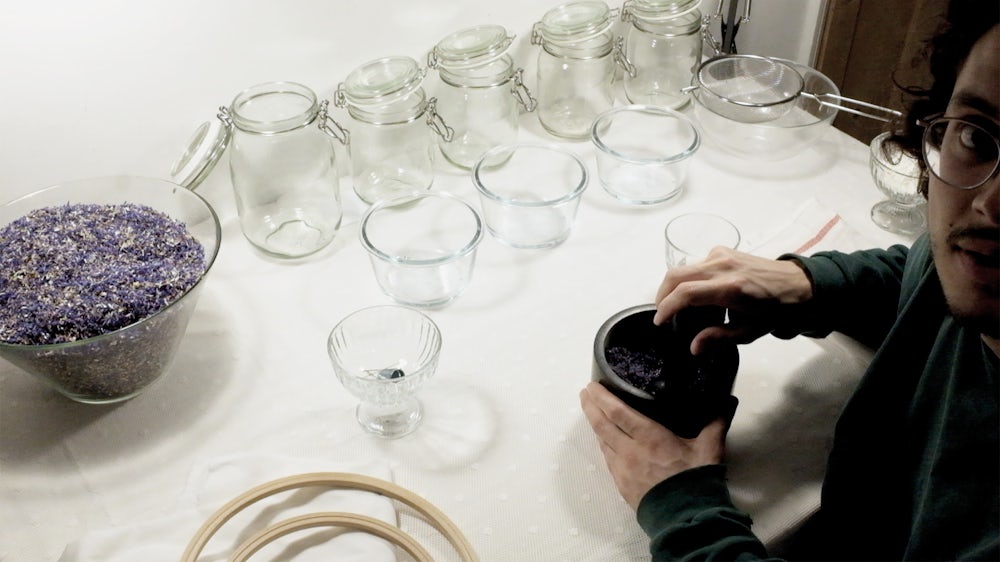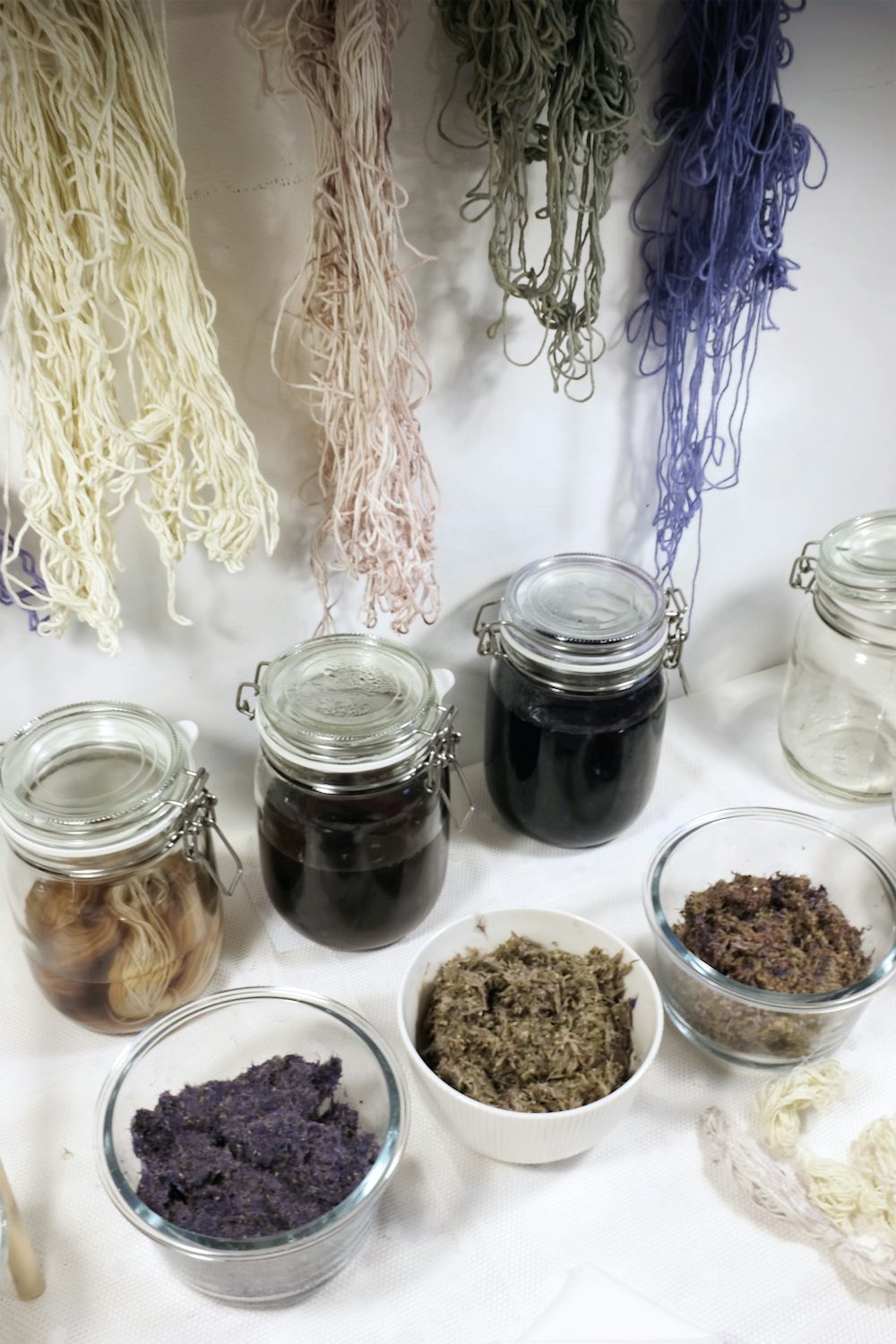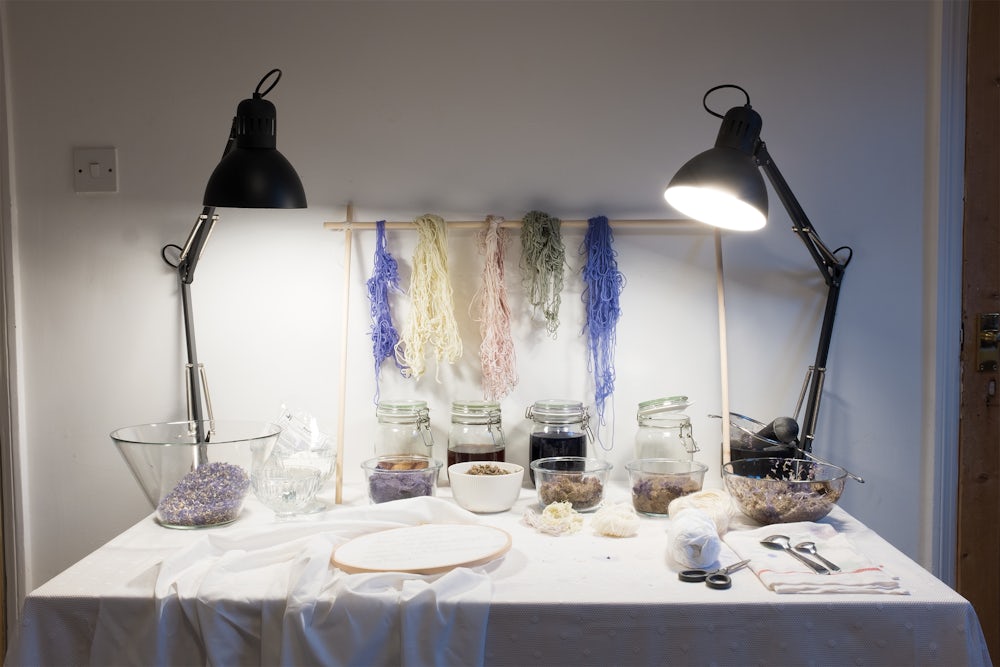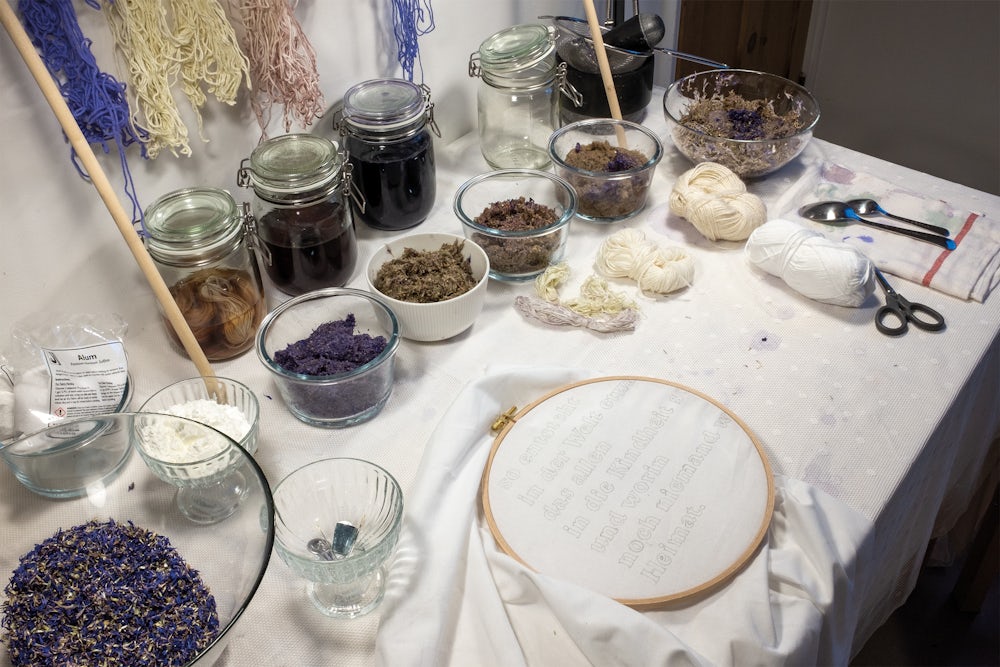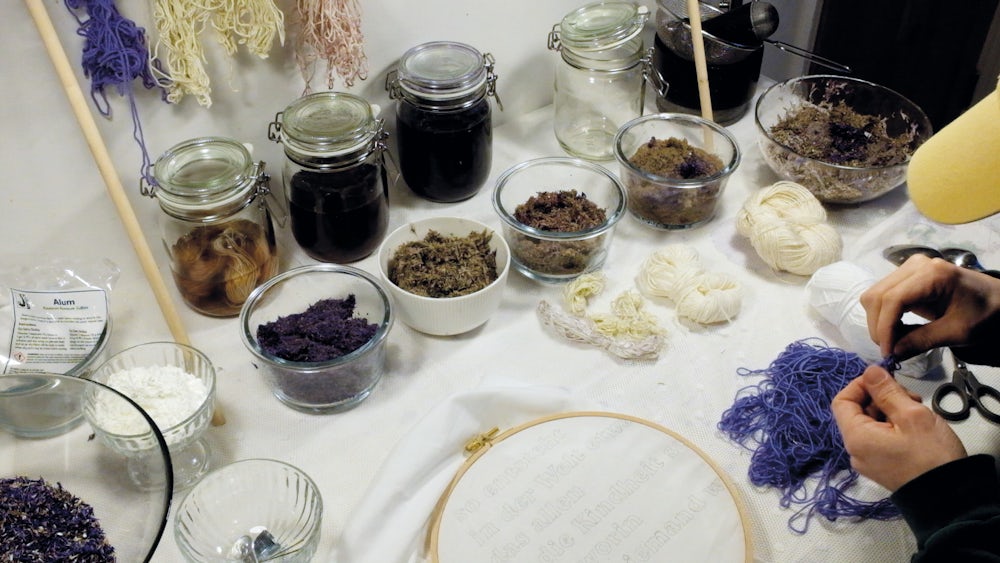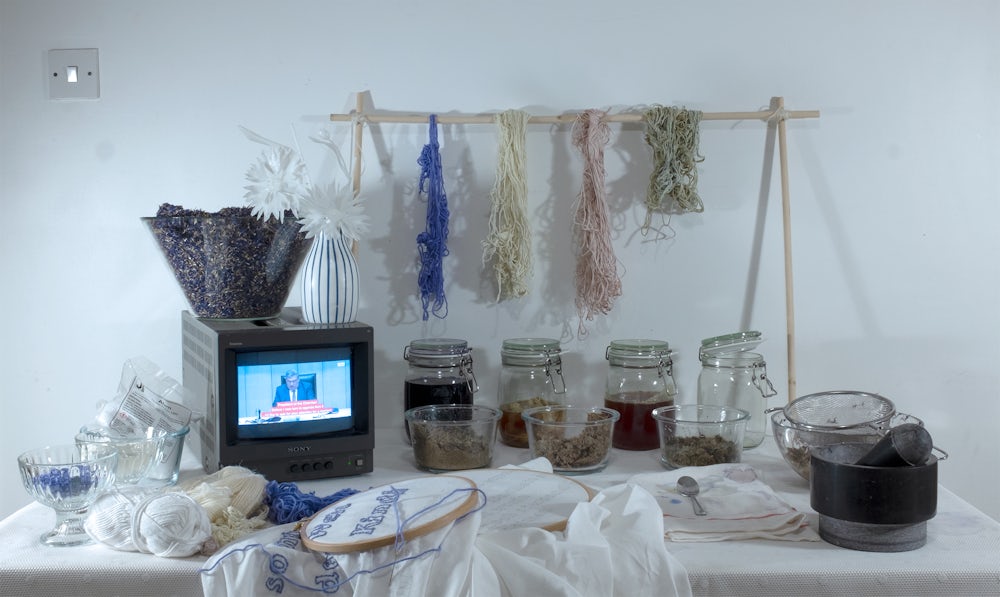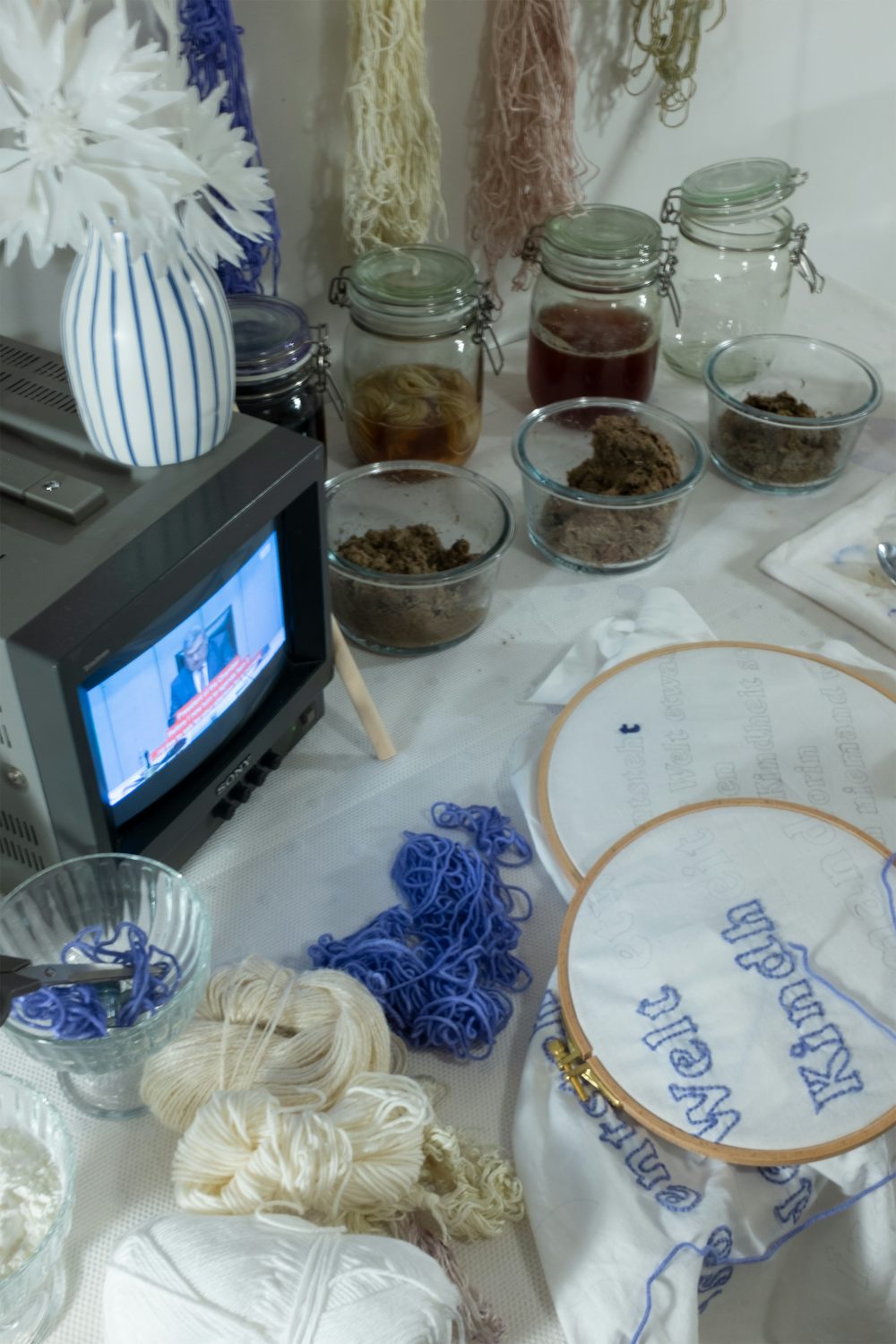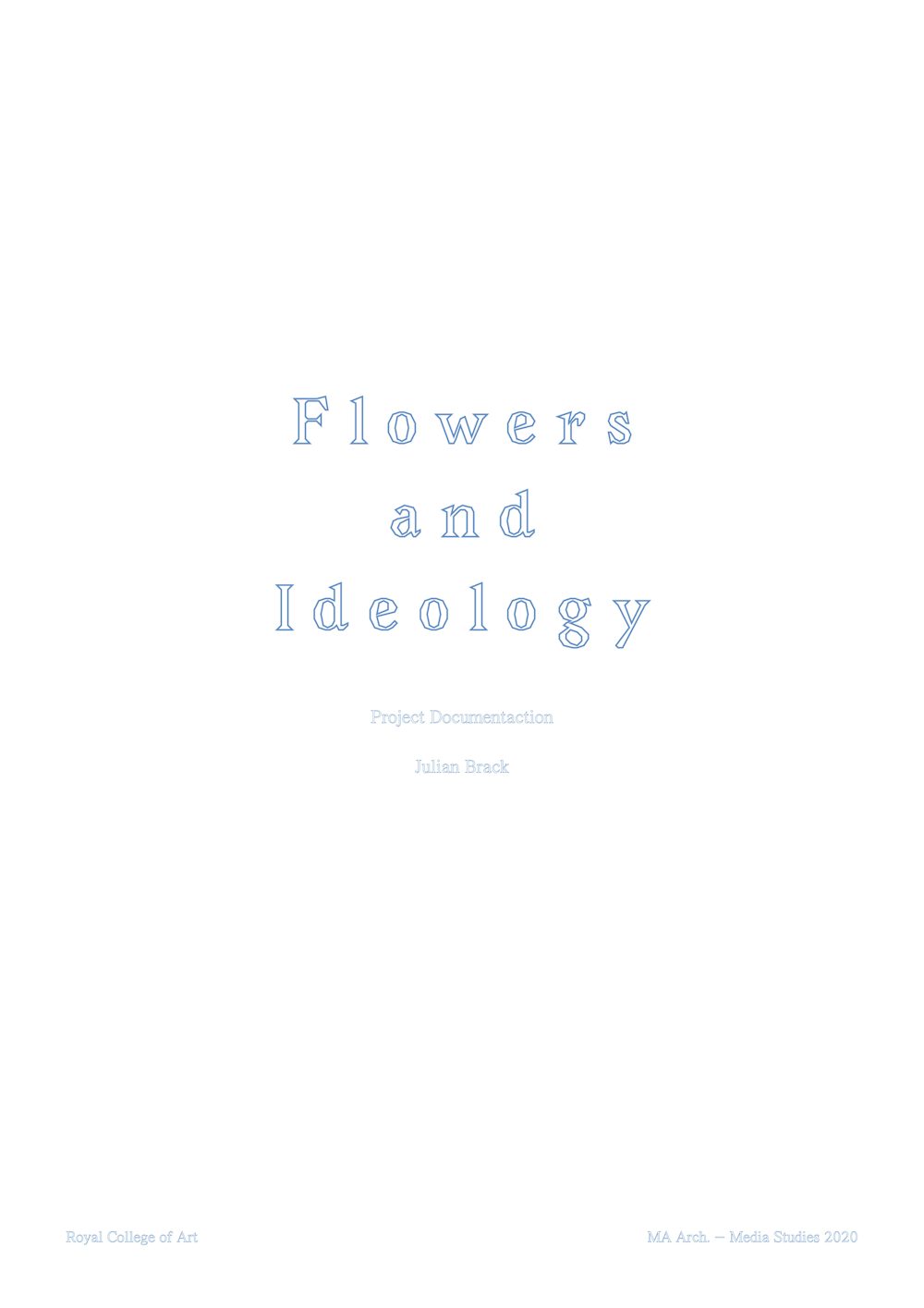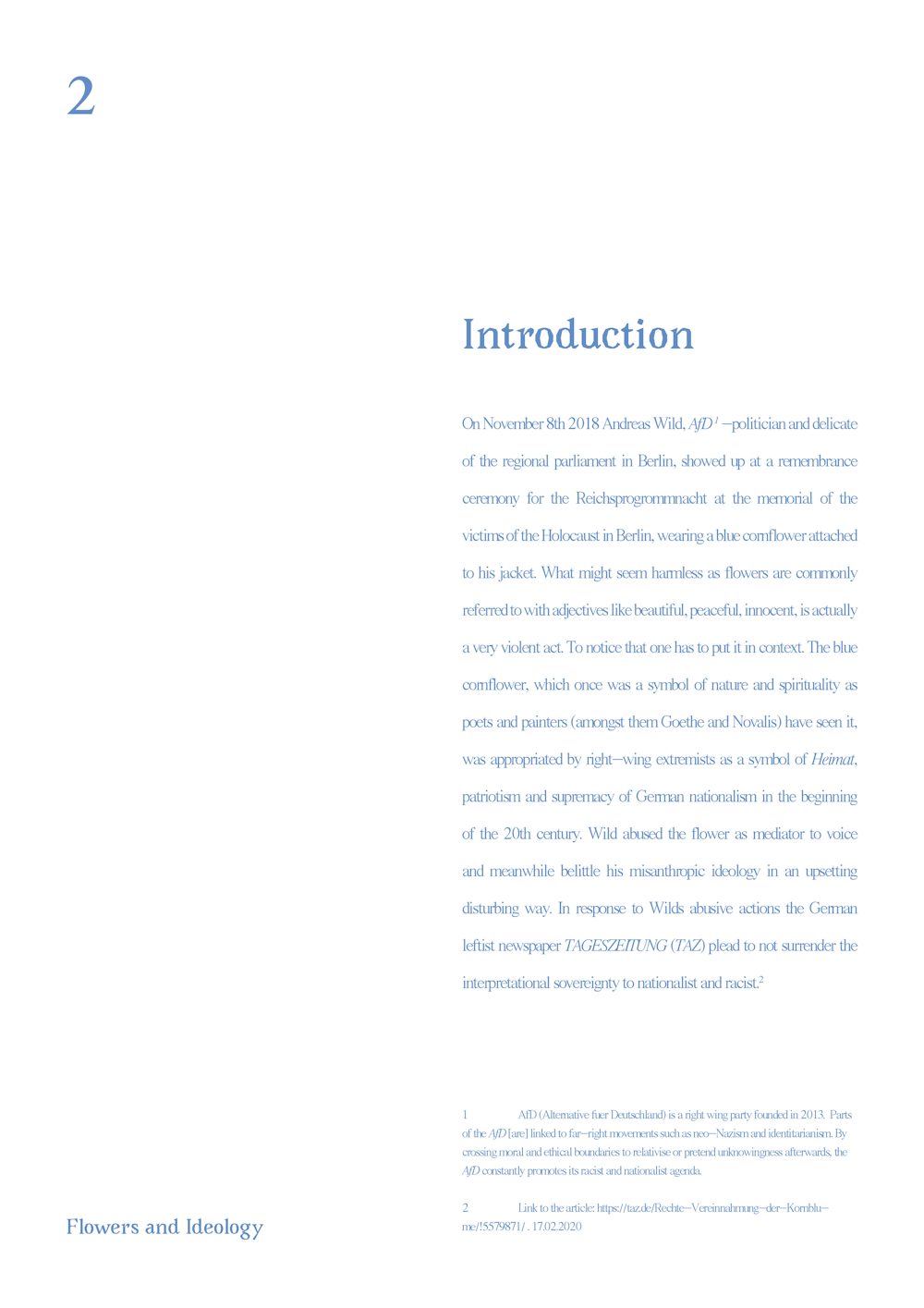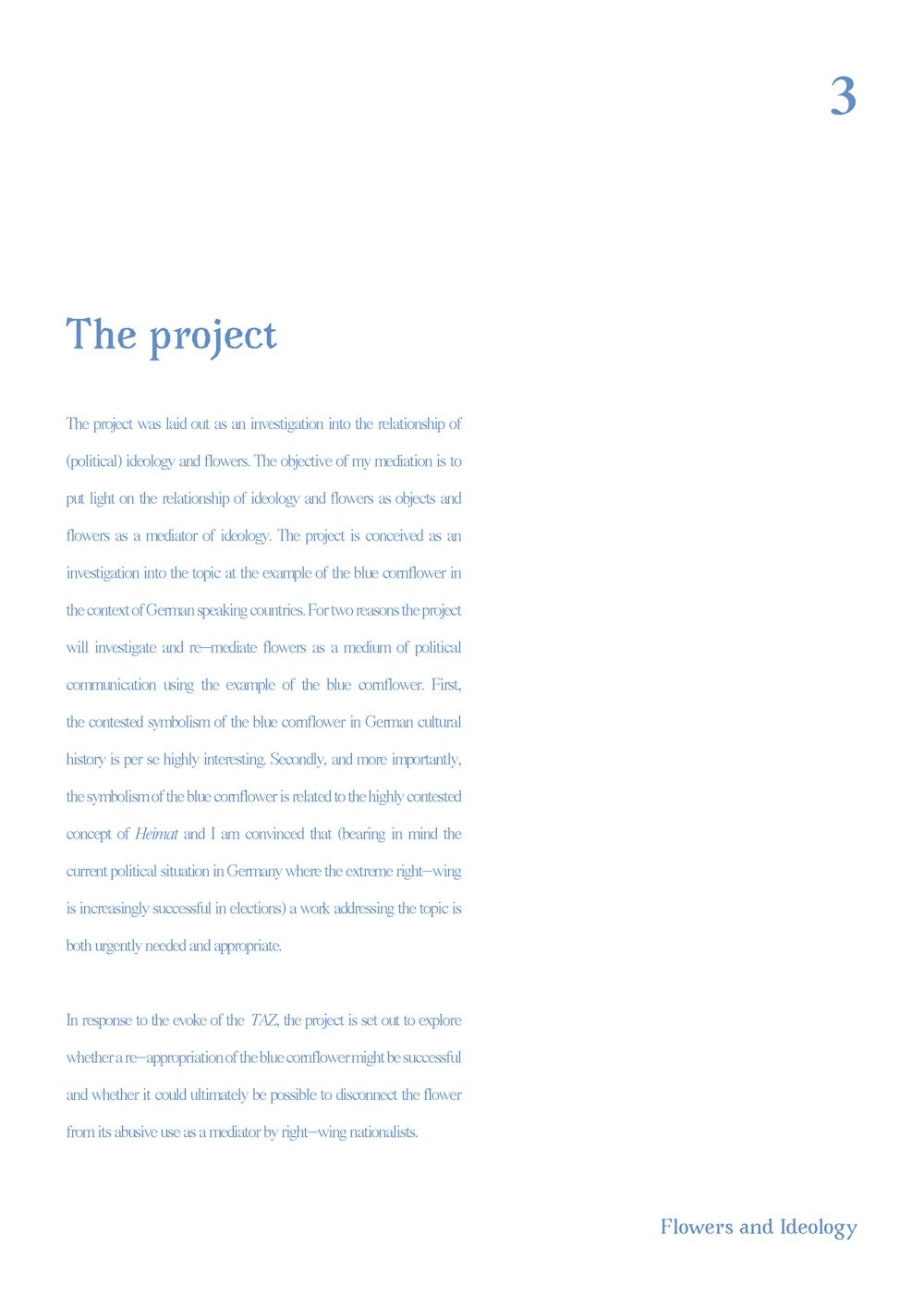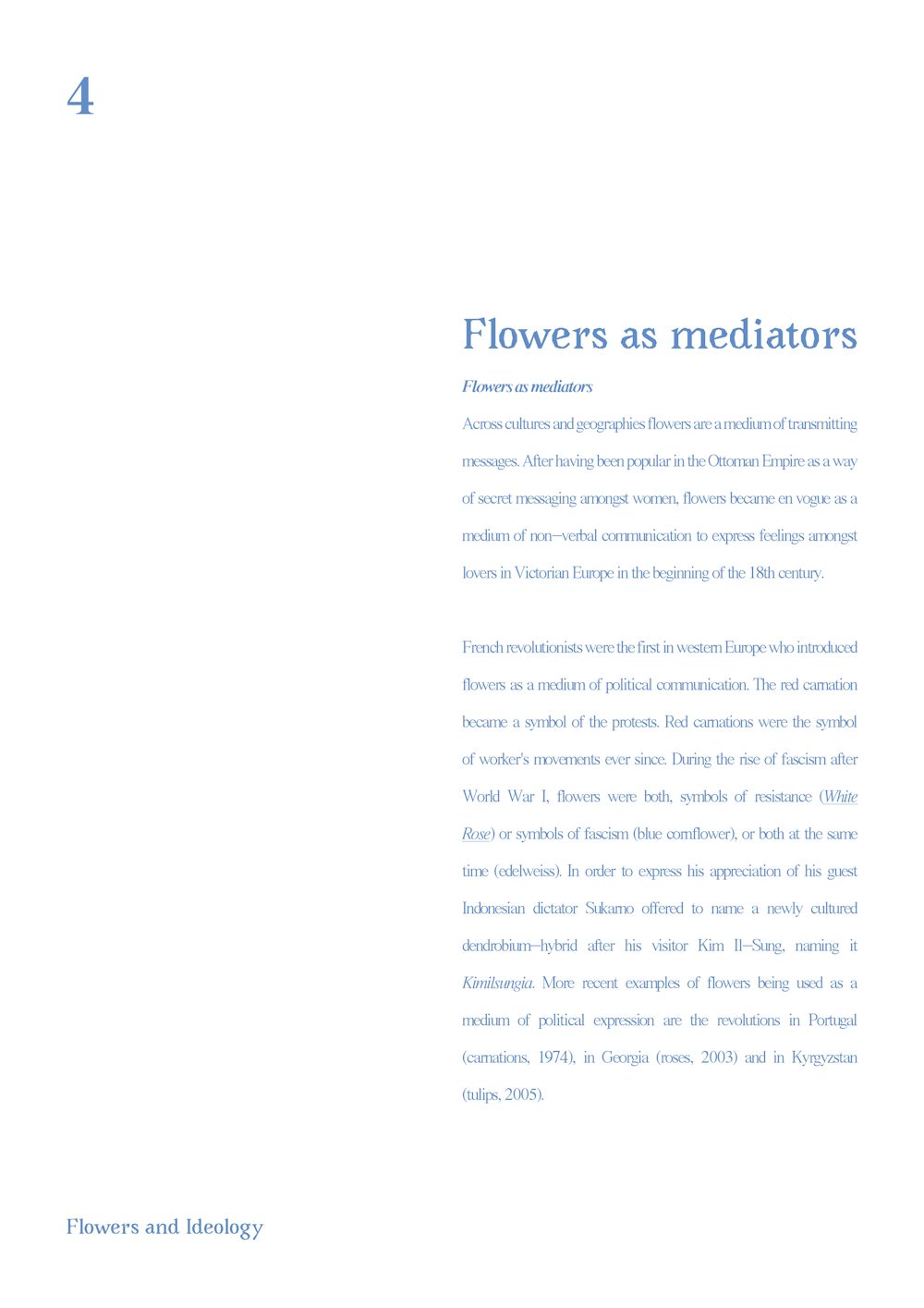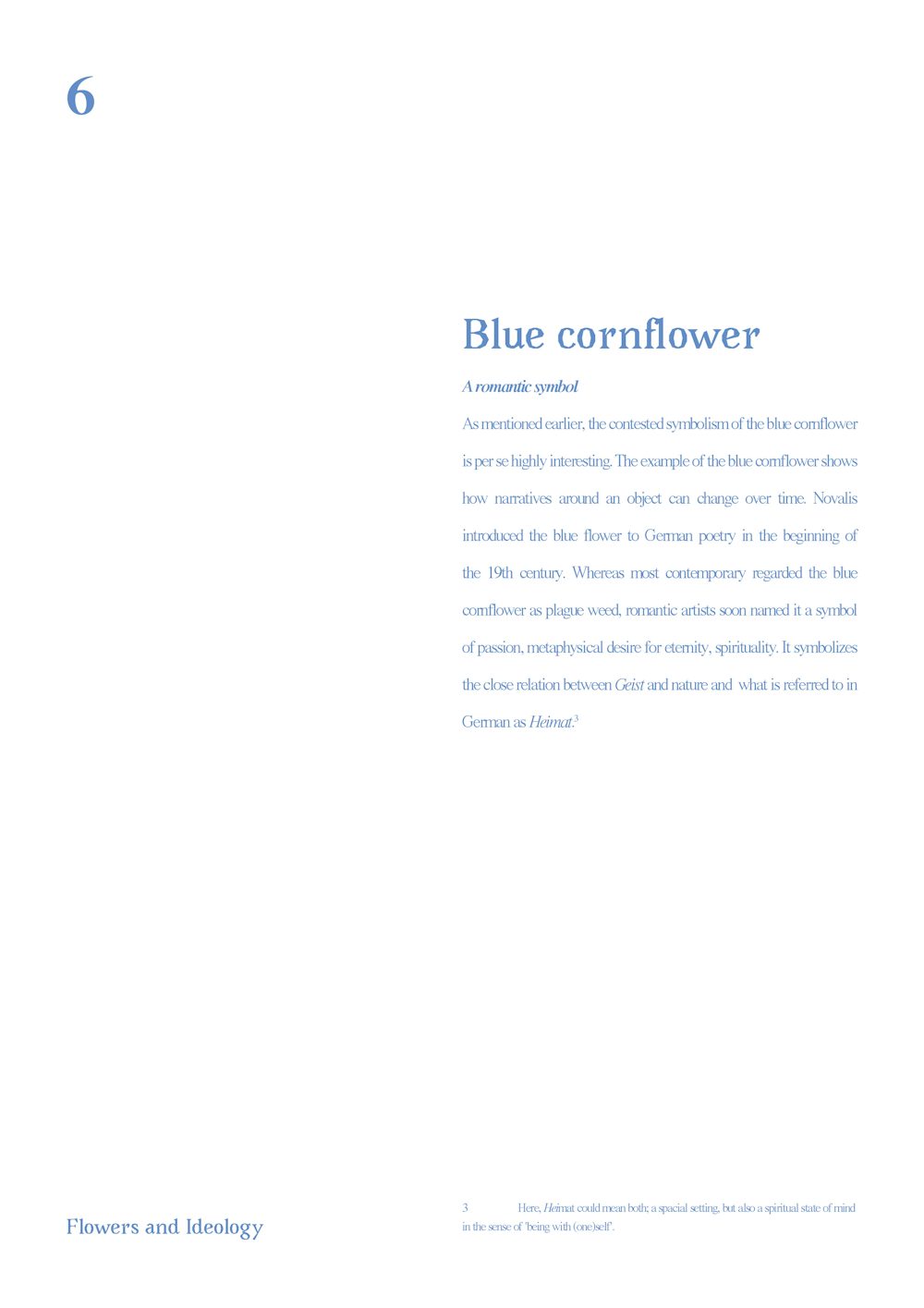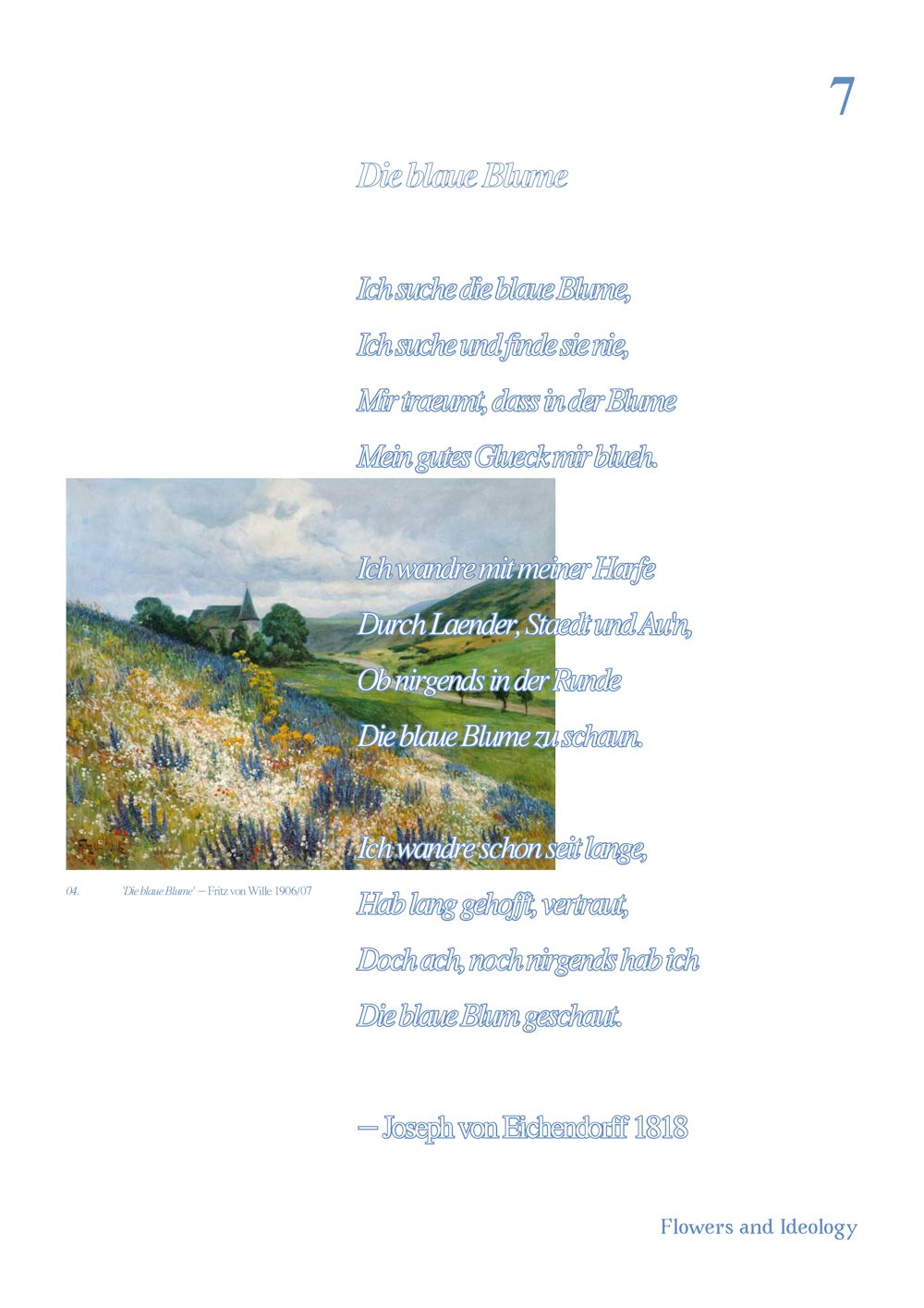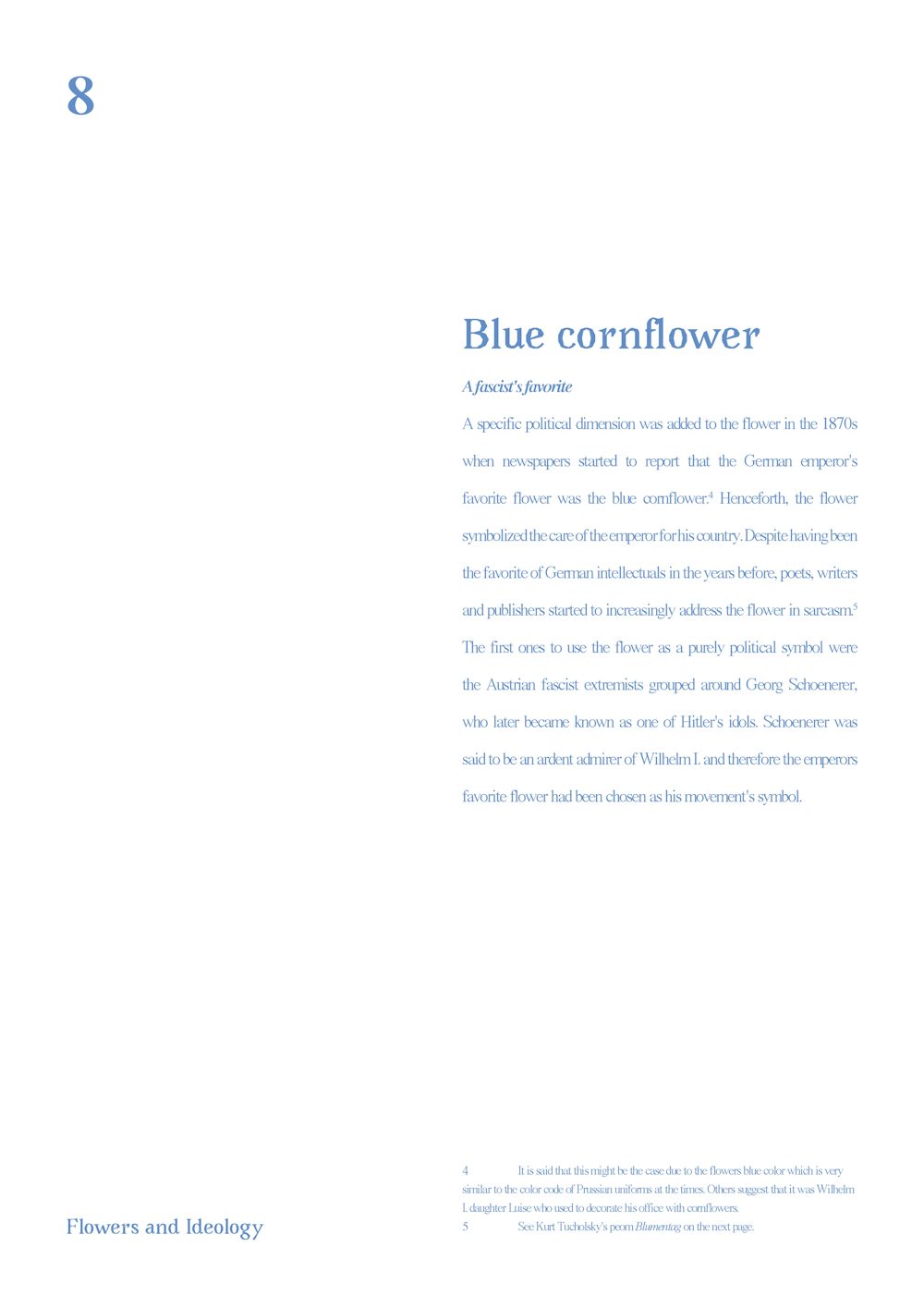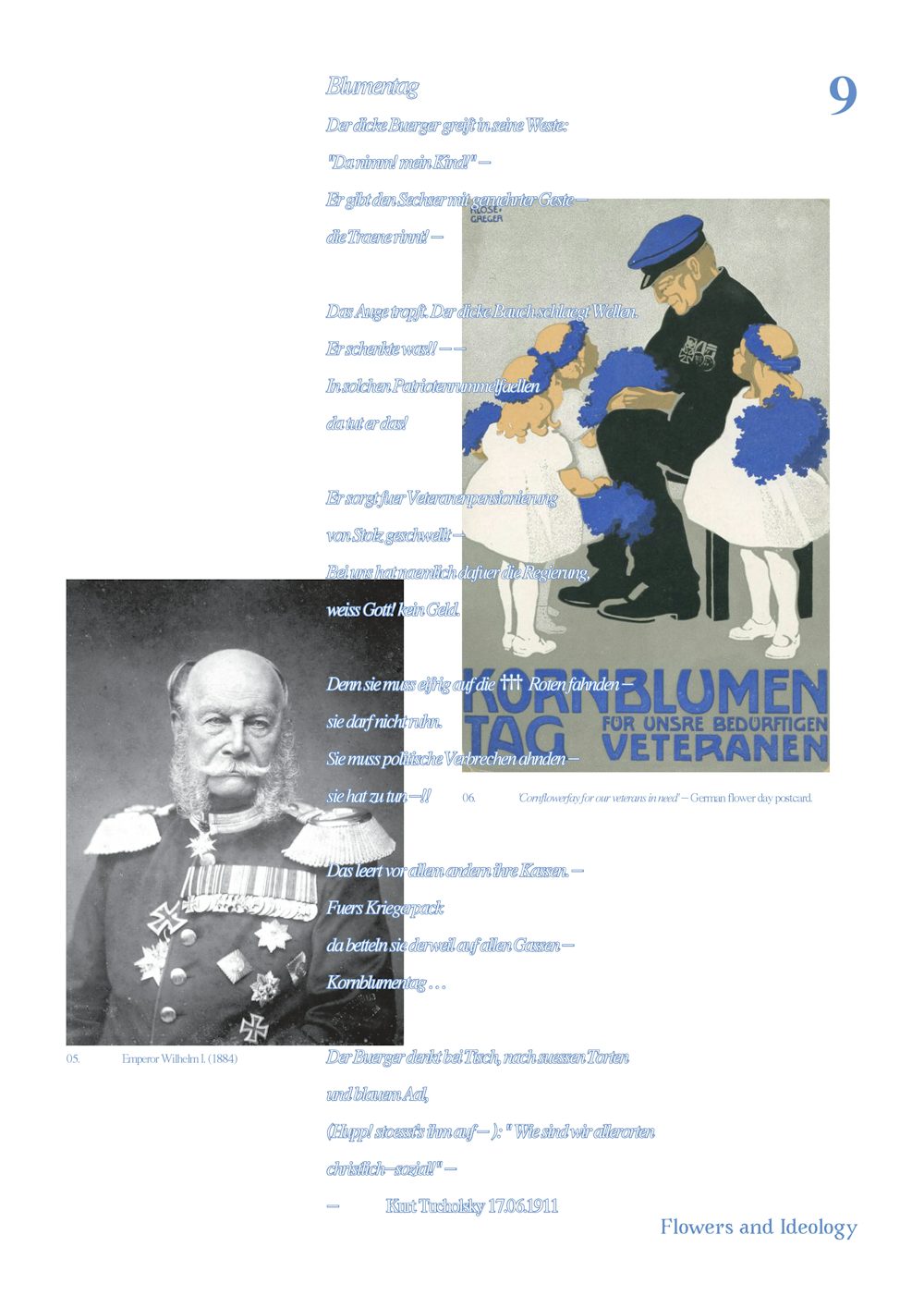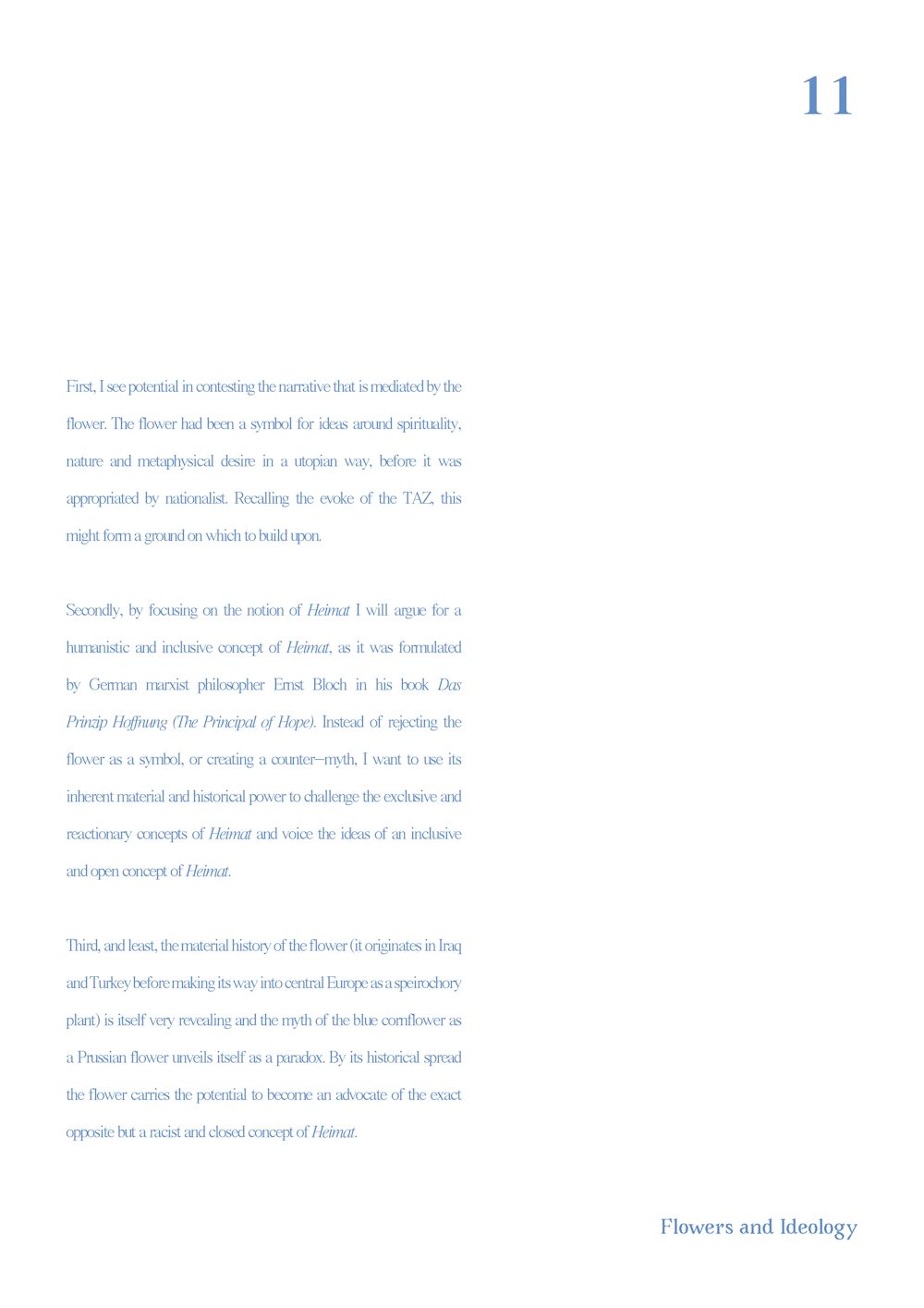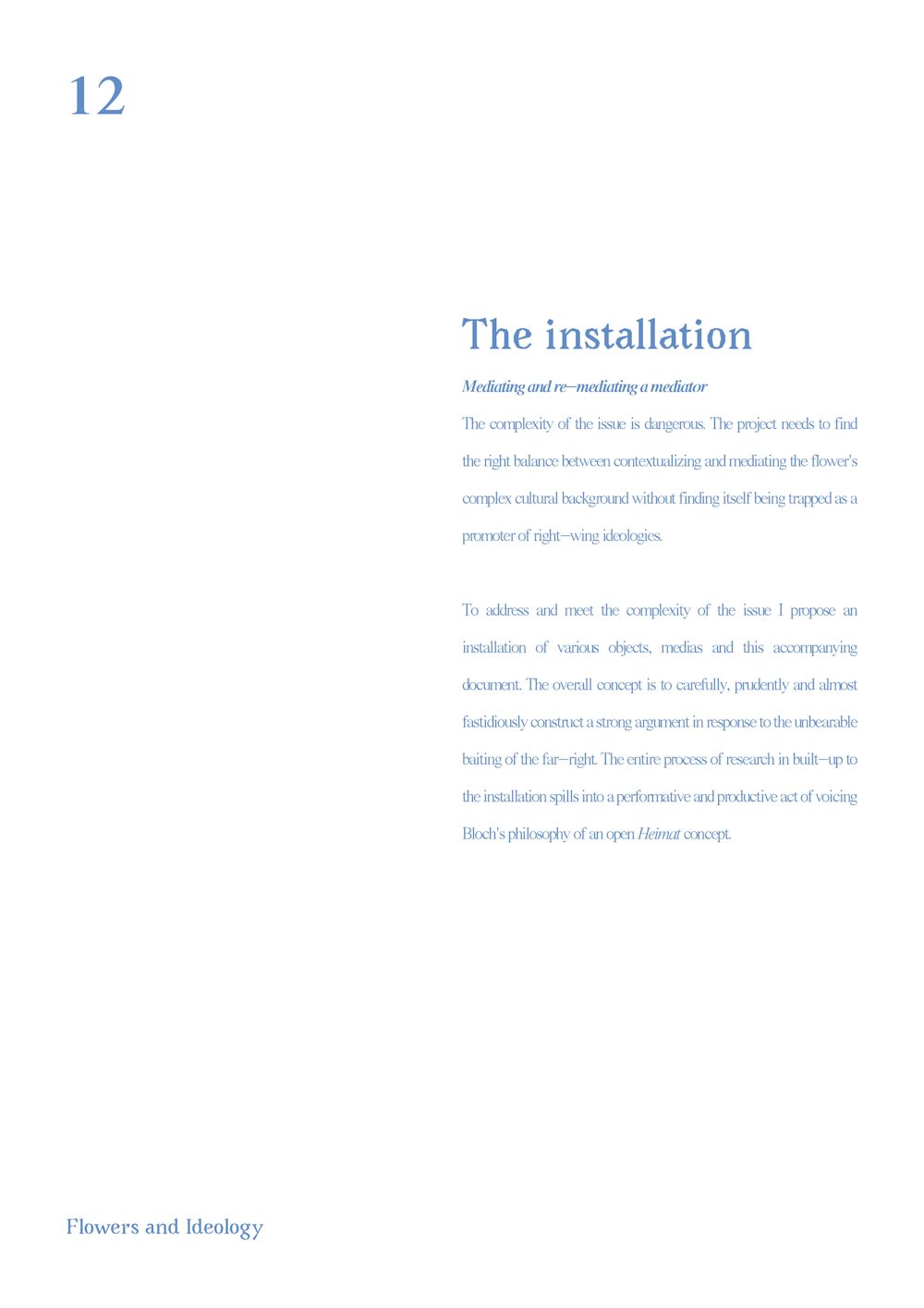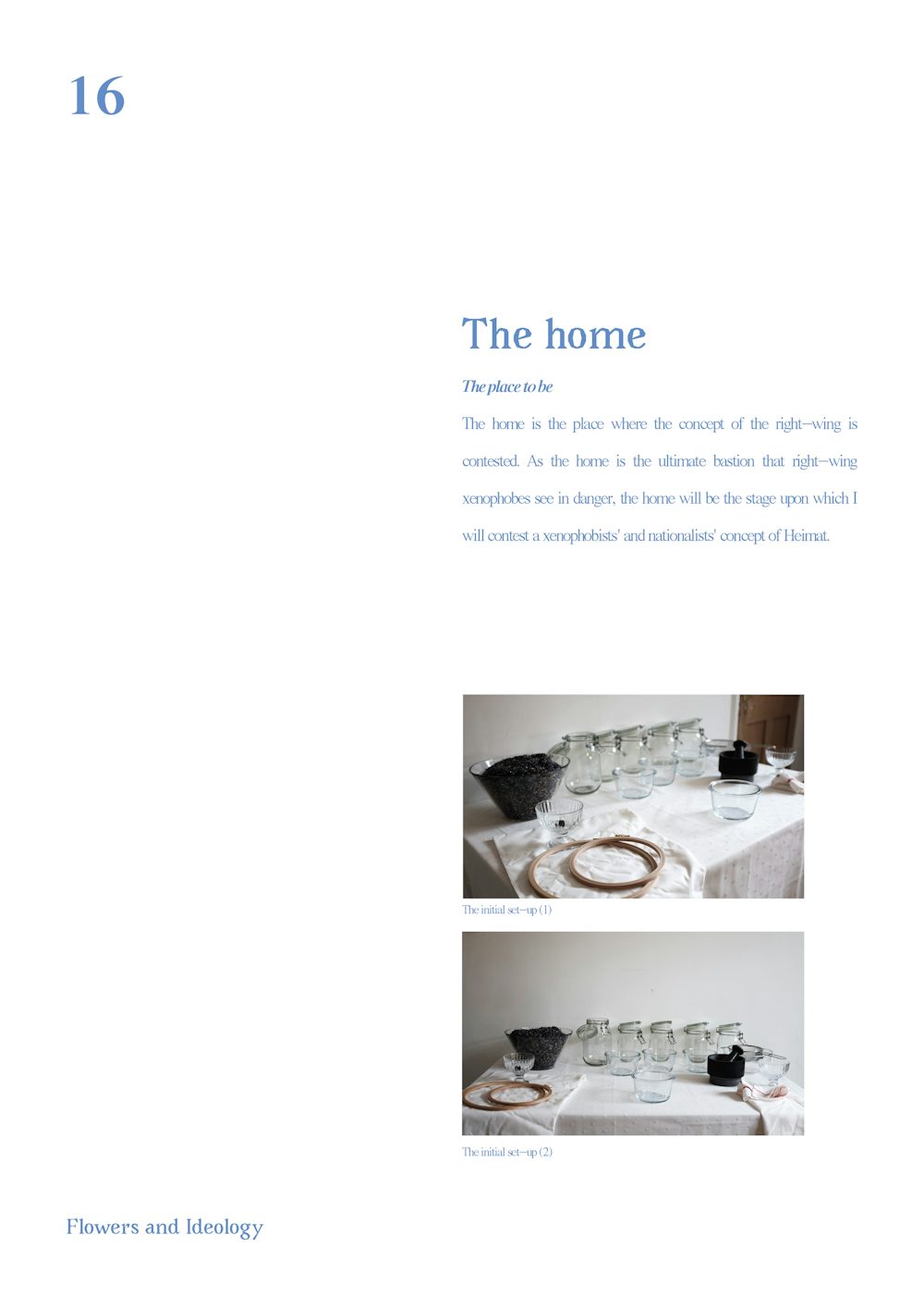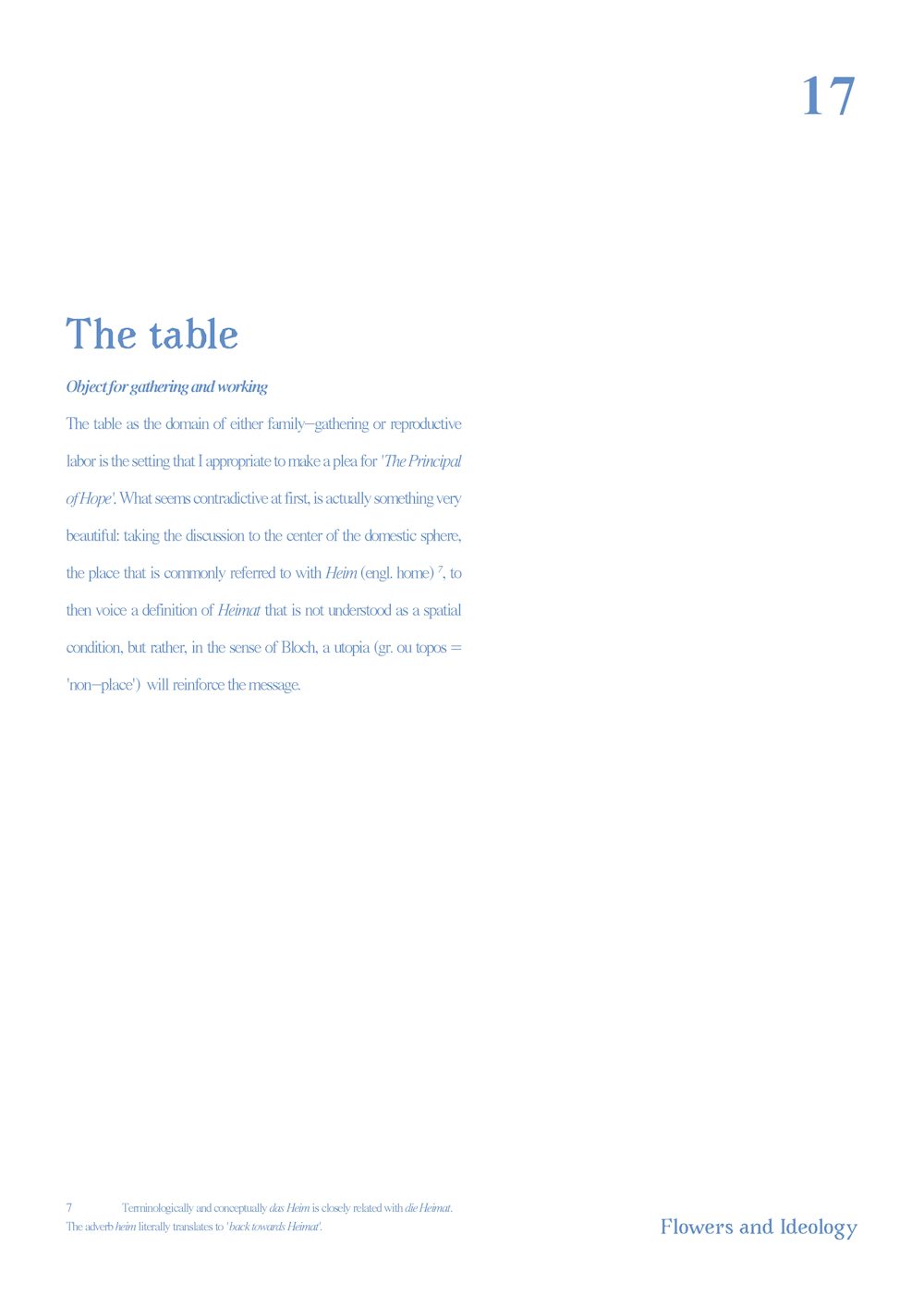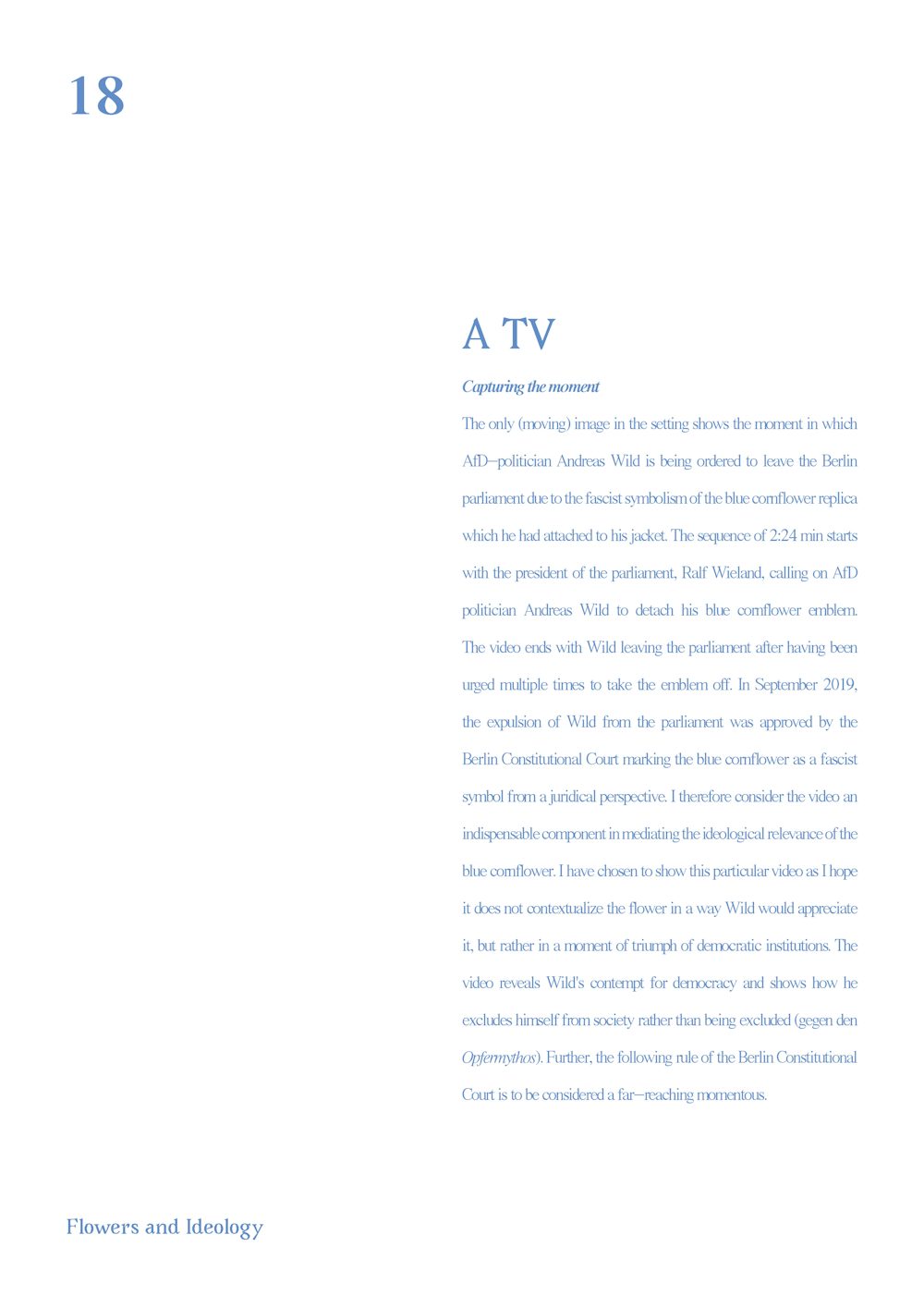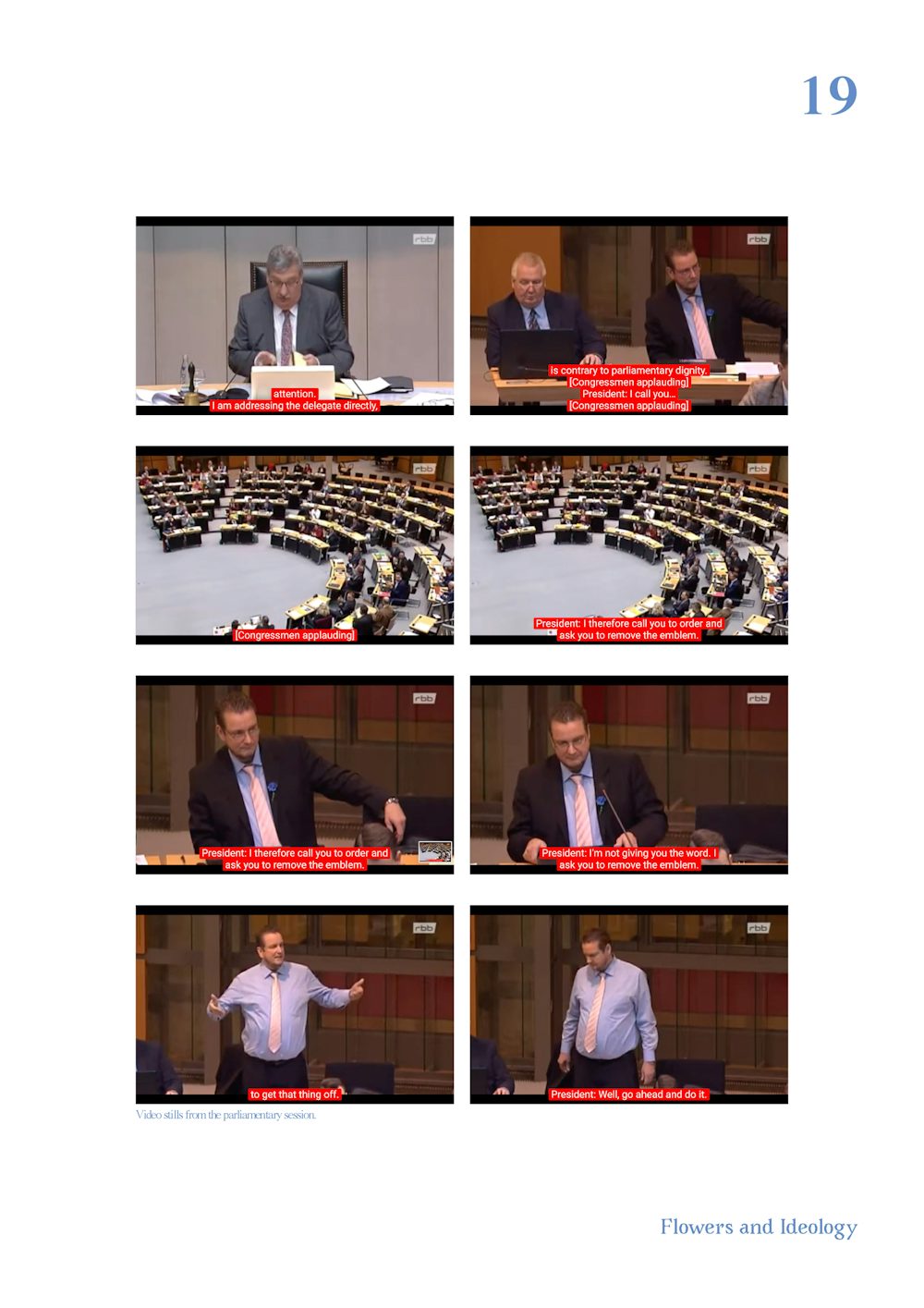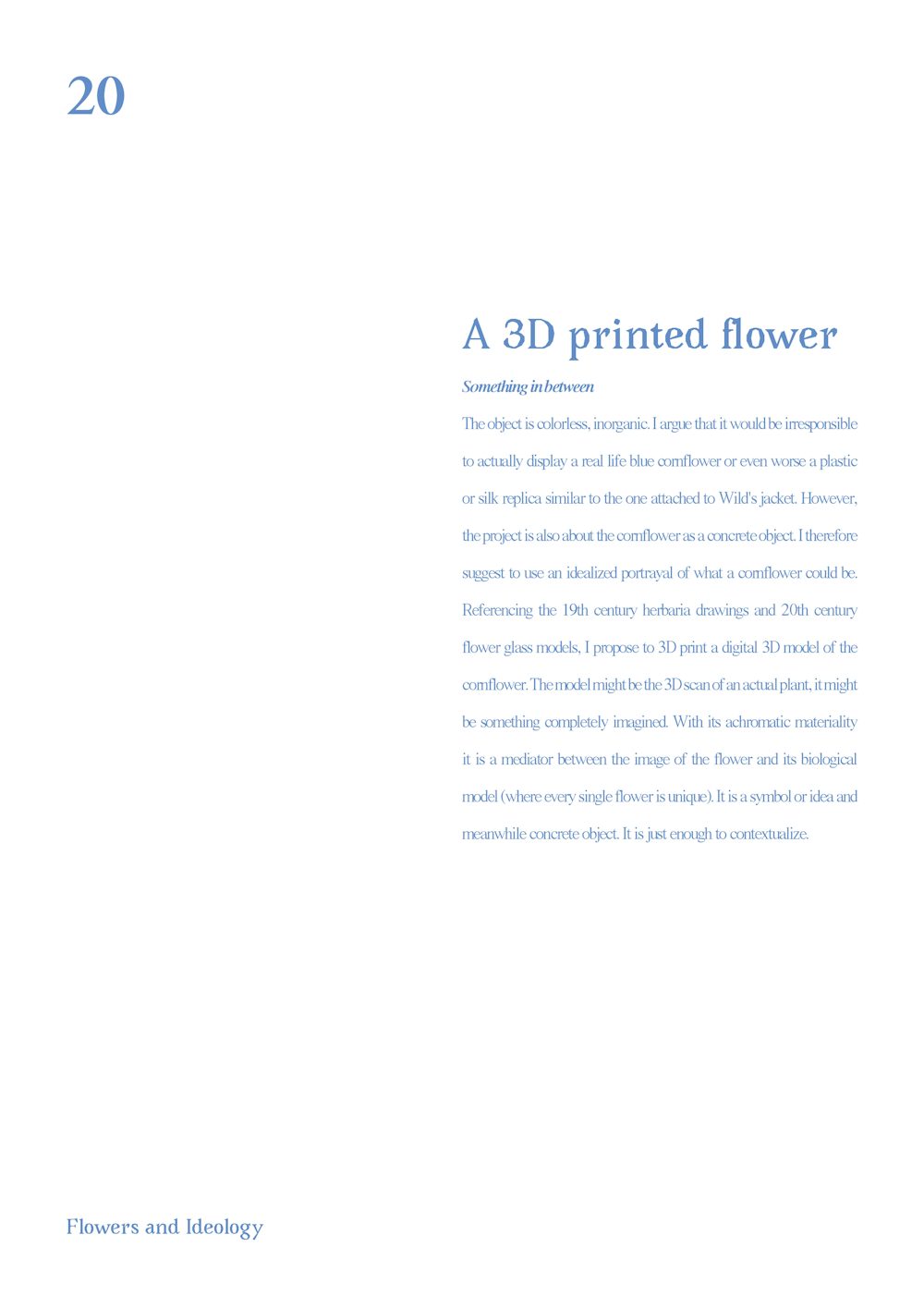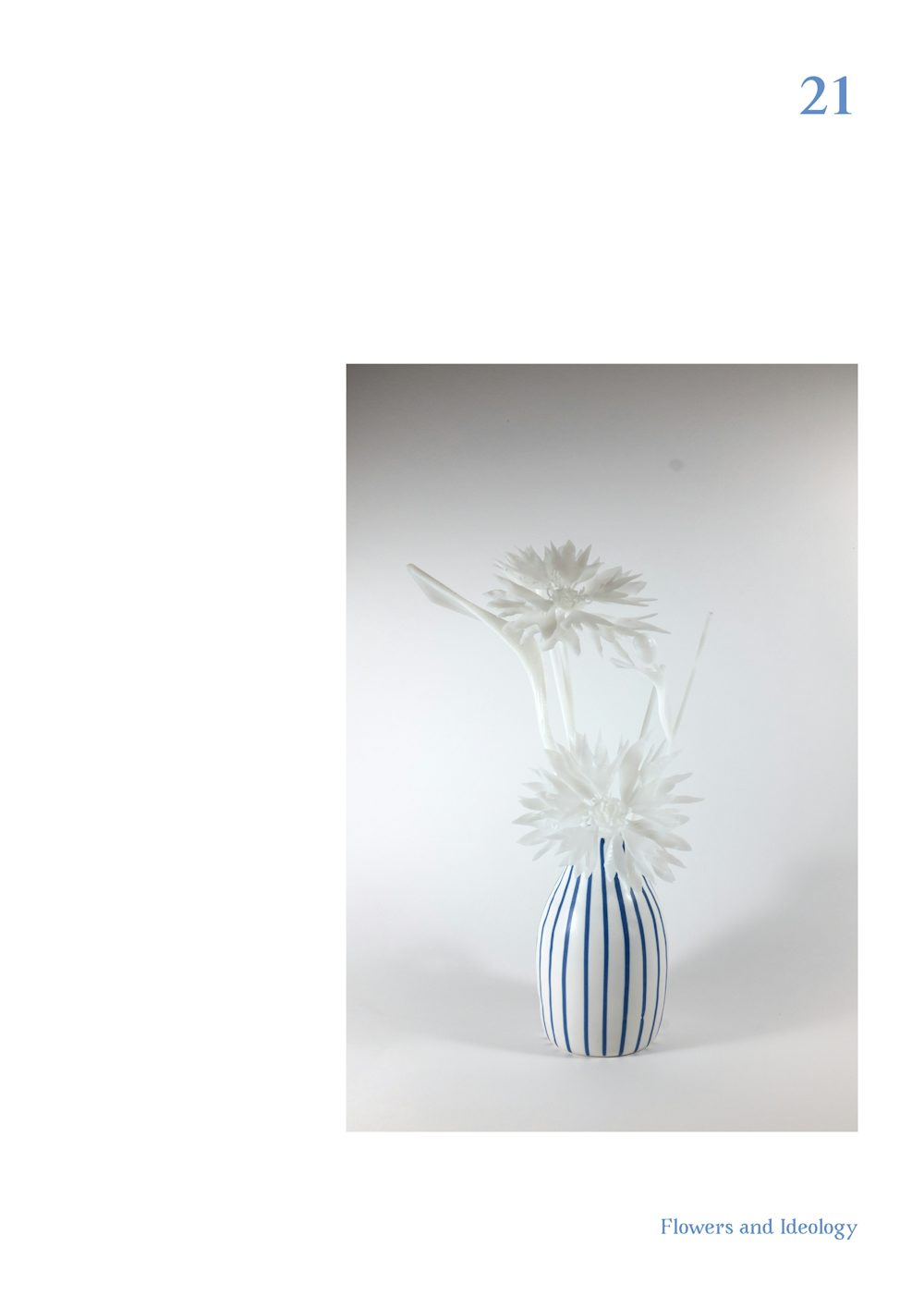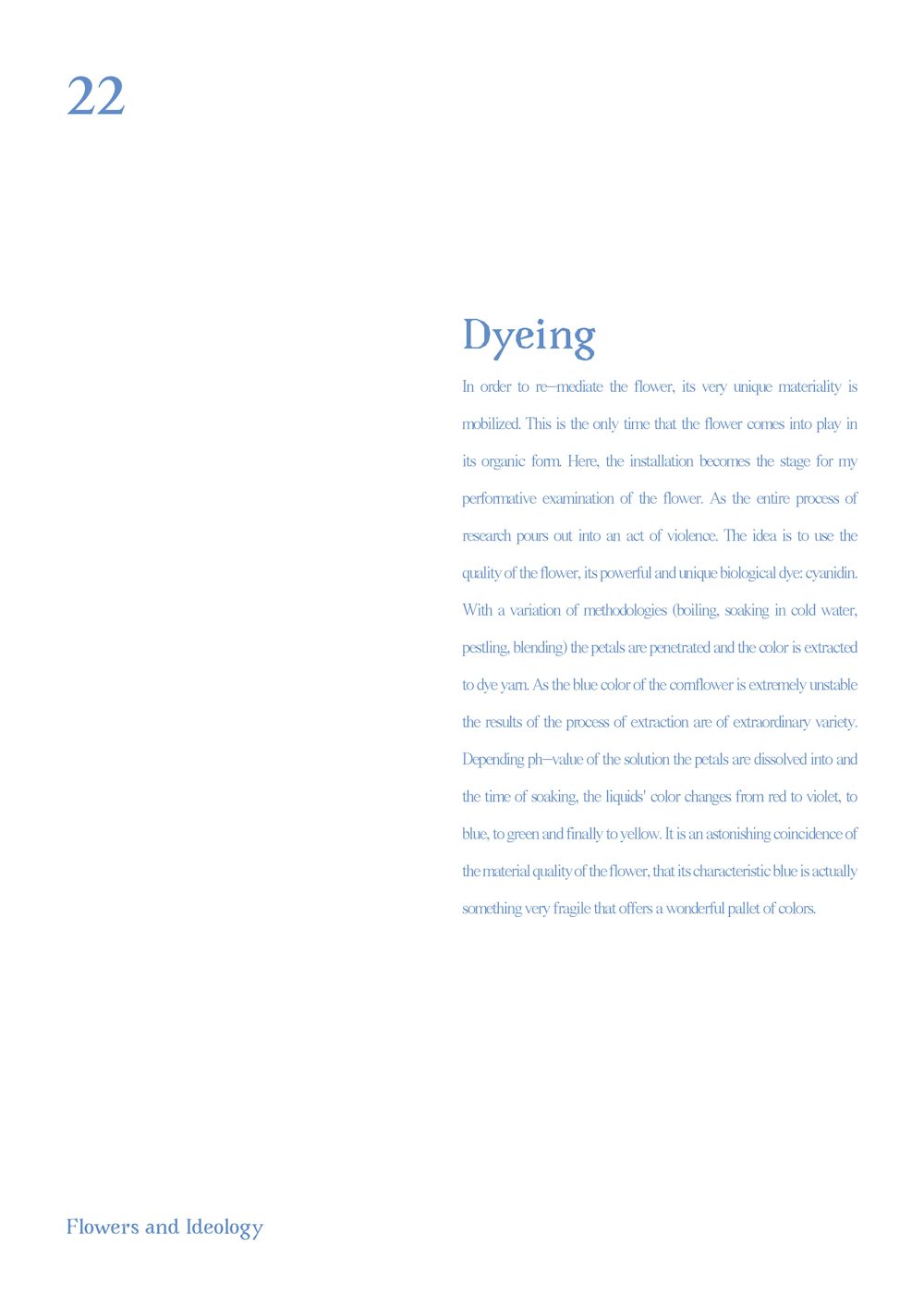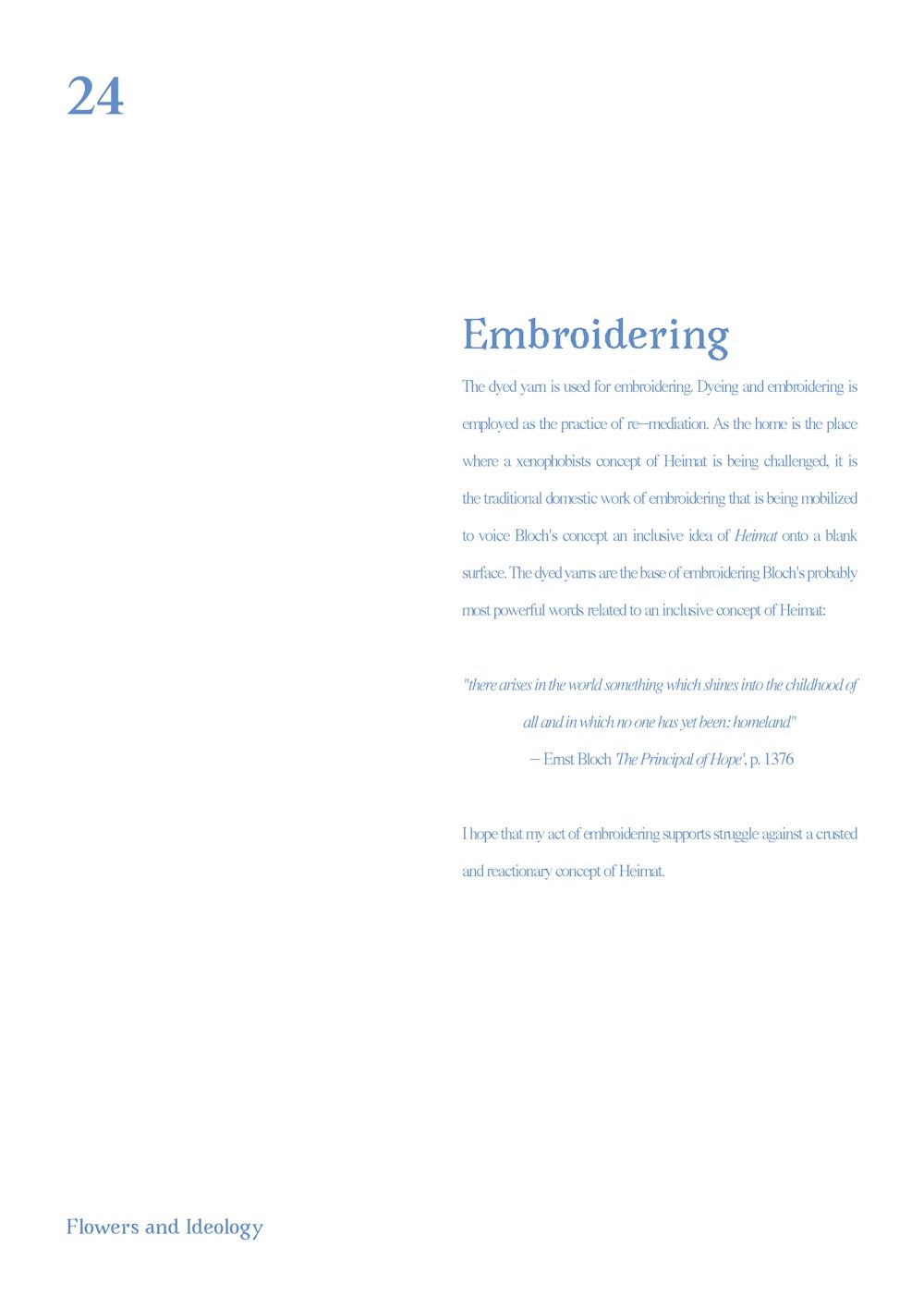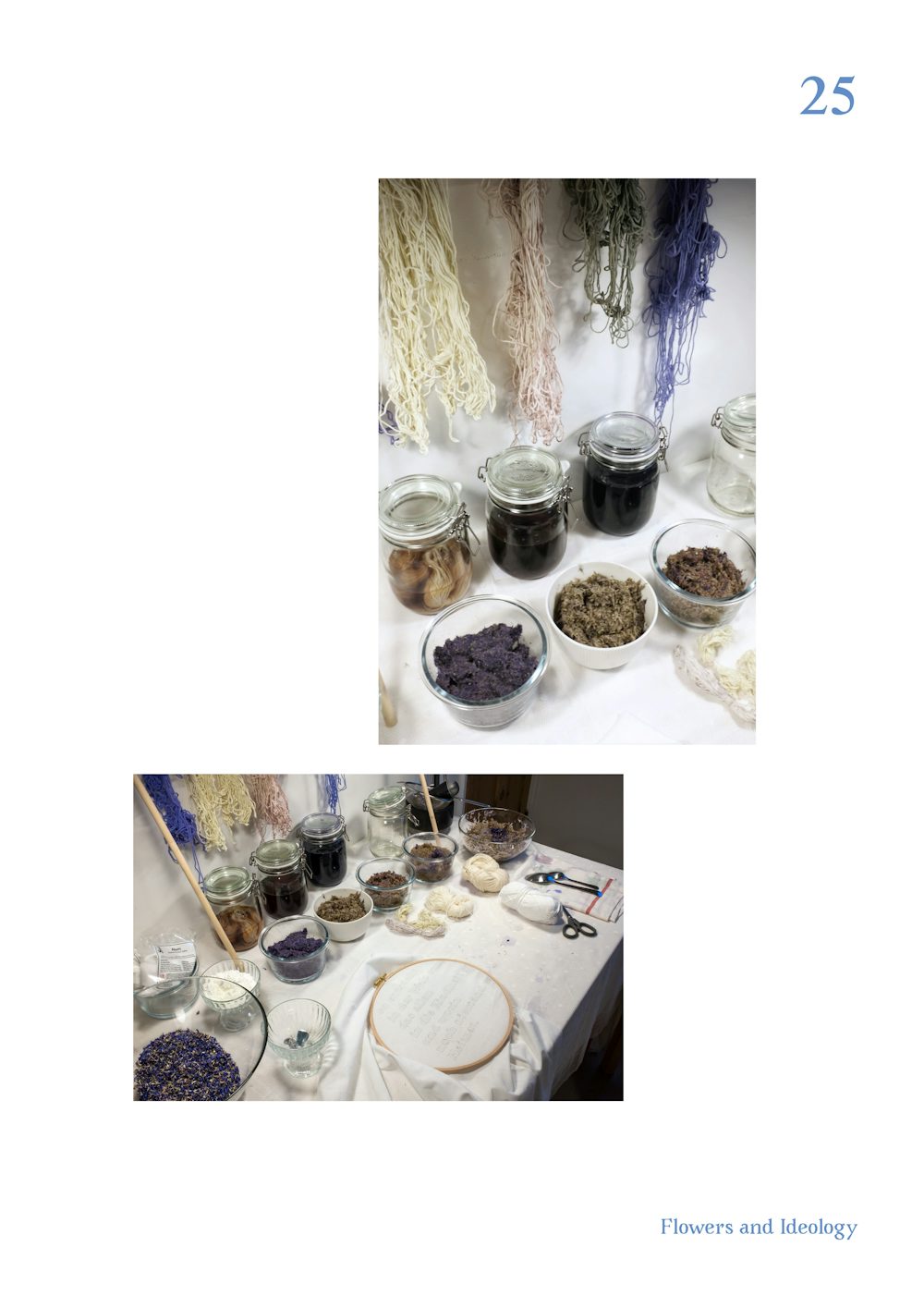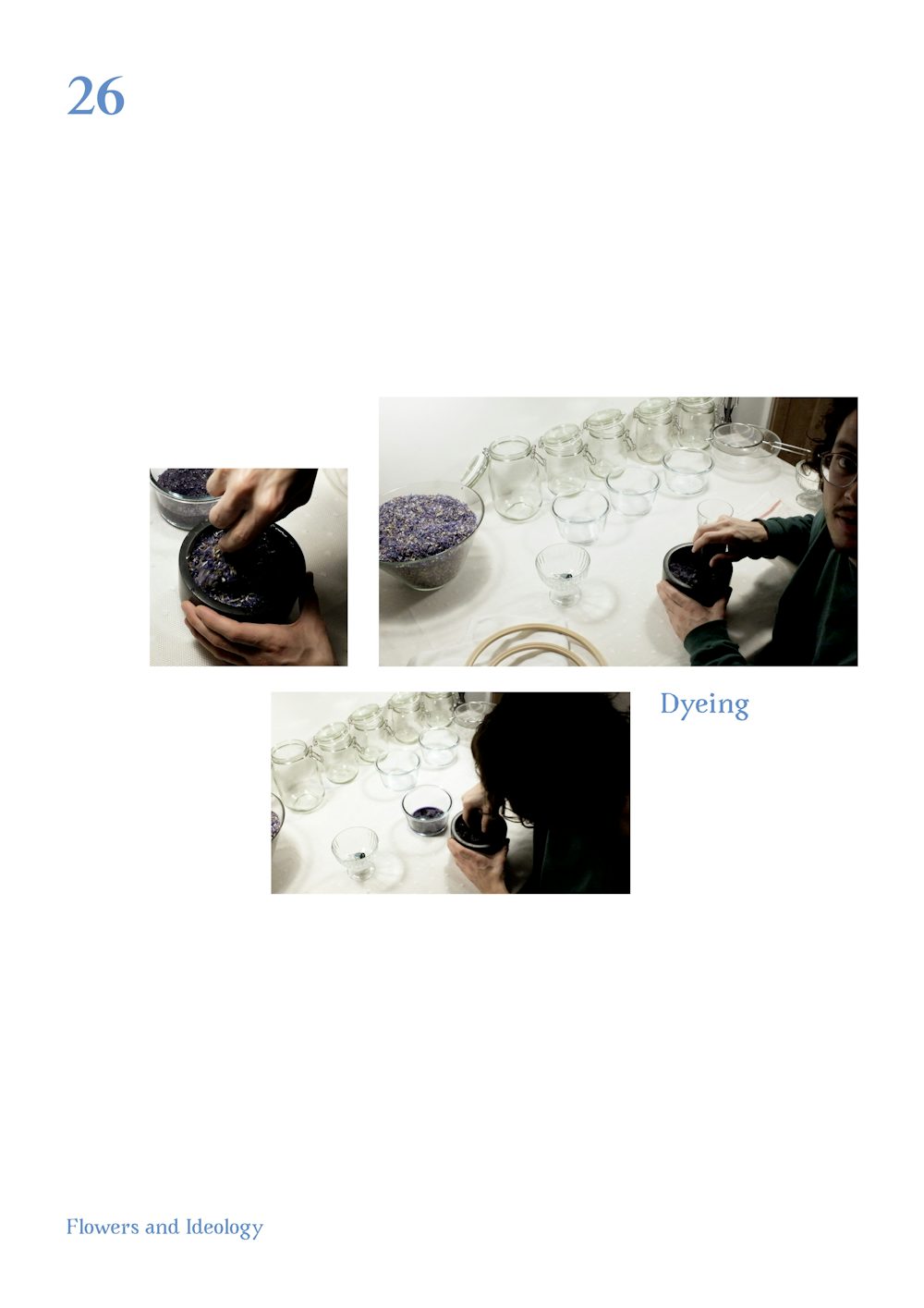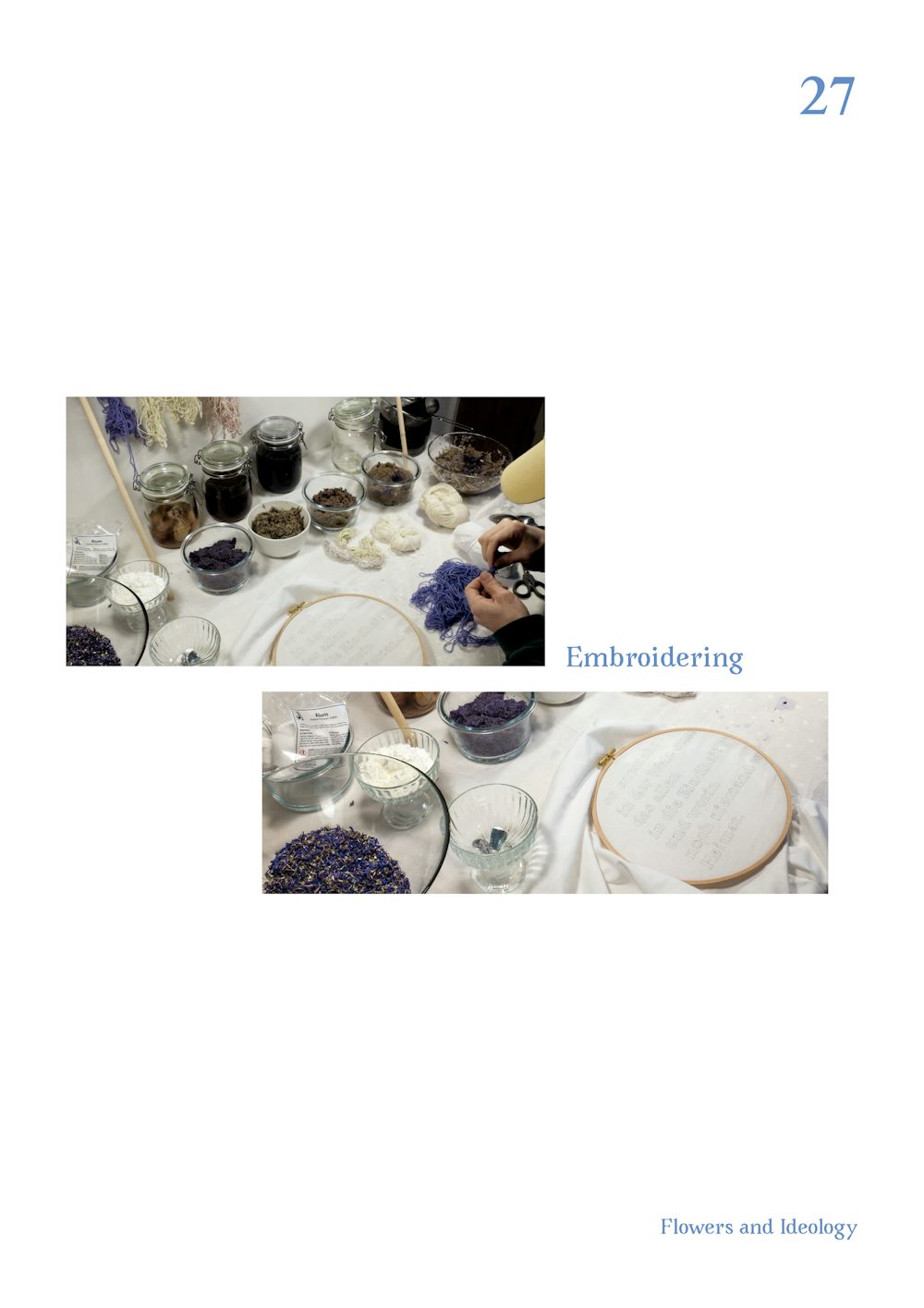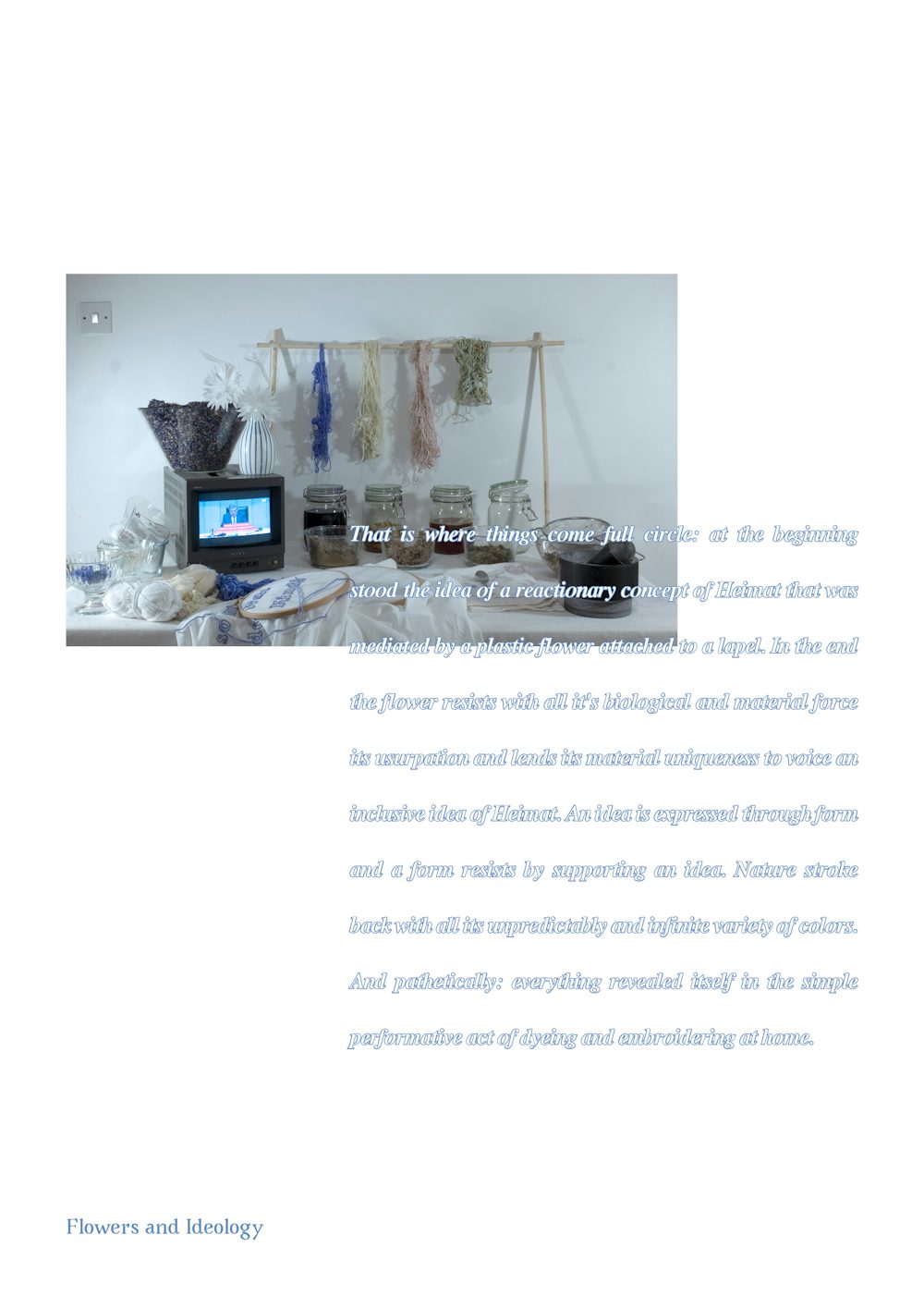Julian Brack
"Flowers and Ideology"
Keywords: mixed media installation, photography, home, moving image, objects
On November 8, 2018 Andreas Wild, a right-wing politician and a delegate of the regional parliament in Berlin, showed up at the commemoration ceremony for the Reichsprogrommnacht held at the memorial for the victims of the Holocaust in Berlin, wearing a blue cornflower attached to his jacket. What might have seemed as harmless as a flower (often endowed with adjectives like beautiful, peaceful, innocent) was in fact used to perform a very violent act. To notice that, one has to put it in the context. The blue cornflower, which once was a symbol of nature and spirituality as poets and painters (amongst them Goethe and Novalis) have seen it, was appropriated by right-wing extremists as a symbol of Heimat, patriotism and supremacy of German nationalism at the beginning of the 20th century. Wild abused the flower as a mediator to voice his misanthropic ideology in an upsetting and disturbing way.
This project was laid out as an investigation into the relationship of (political) ideology and flowers. The objective of my mediation is to shed light onto a relationship between ideology and flowers as objects, and flowers as mediators of ideology. The project is conceived in response to the above-mentioned event, and as an investigation into the topic of the blue cornflower in the context of German speaking countries. For two reasons the project investigates and re-mediates flowers as a medium of political communication using the example of the blue cornflower. First, the contested symbolism of the blue cornflower in German cultural history is per se highly interesting. Secondly, and more importantly, the symbolism of the blue cornflower is related to the highly contested concept of Heimat, and I am convinced that (bearing in mind the current political situation in Germany where the extreme right-wing is increasingly successful in elections) work addressing the topic is both urgently needed and appropriate. The project is set out to explore whether a re-appropriation of the blue cornflower might be successful, and whether it could ultimately be possible to disconnect the flower from its abusive use as a mediator by right-wing nationalists.
The complexity of the issue is dangerous. The project needs to find the right balance between contextualising and mediating the flower's complex cultural background without finding itself being trapped as a promoter of right-wing ideologies. Therefore, I propose a carefully curated installation of objects and other medias, and an accompanying document. The overall concept is to carefully, prudently and almost fastidiously construct a strong argument in response to the unbearable baiting of the far-right. The entire process of research, built-up to the installation spills into a performative and productive act of voicing Bloch's philosophy of an open Heimat concept.

